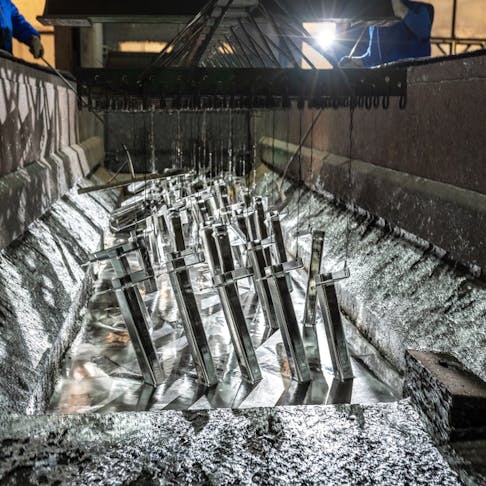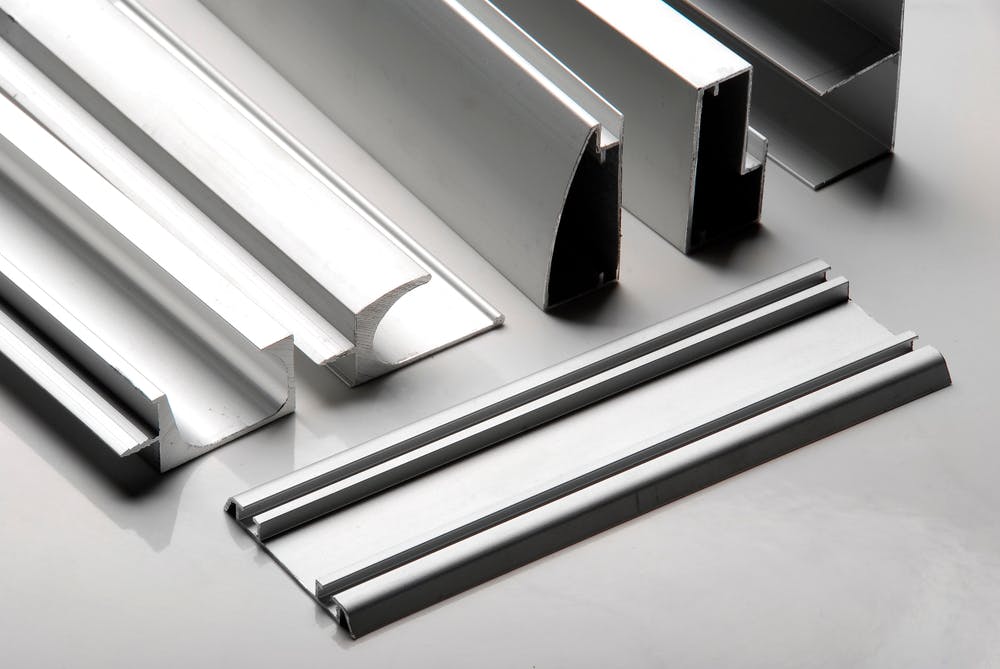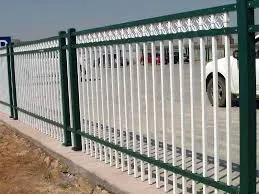
jul . 18, 2024 15:24 Back to list
Galvanized Steel vs Aluminum: The Key Differences
Galvanized Steel vs Aluminum: The Key Differences

Galvanized steel vs aluminum offer highly selective differences in their properties and applications which drive commercial and functional selection between them. Galvanized steel generally uses medium-carbon steel as a substrate. It is dipped into molten zinc to provide a protective coating against corrosion. It is valued for its durability, environmental longevity, and toughness. Aluminum is a light metal that is very common in the earth's crust, in highly accessible ore deposits. It is known for its low density, high strength-to-weight ratio, corrosion resistance, and thermal conductivity.
Aluminum is widely used in transportation, construction, consumer goods, and electrical equipment due to its advantageous properties. On the other hand, galvanized steel is commonly used in construction for its low cost, durability, and longevity, thanks largely to the zinc coating greatly reducing the environmental susceptibility of bare steel.
This article will delve into the key differences between galvanized steel and aluminum.
What Is Galvanized Steel?
Galvanized steel is steel that has been hot-dip coated (or electroplated) with zinc, which acts as a resilient corrosion protection. The process of applying zinc in this way is galvanization. This coating creates an ionic barrier between the steel and external elements and an electrochemical sacrificial anode in the electrochemistry of corrosion. This prevents oxidation of the steel (rust), greatly extending the environmental life span of the material.
There are several methods of galvanizing steel, including: hot-dip galvanization, zinc electroplating, mechanical plating, sherardizing (powder melt plating), continuous strip galvanizing, and zinc metal spray. Each method results in a metallic zinc coating on the steel that provides corrosion resistance.
What Does Galvanized Steel Look Like?
Galvanized steel takes on distinctive appearances resulting from the application technique, in which the texture and grain formation in the zinc coating will differ markedly by the method. The surface has a gloss-metallic silver-gray color, smooth and uniform when freshly hot-dipped. Over time, the coating will develop a dull, matte finish. The surface of galvanized steel may also have a fine crystalline pattern, known as a "spangle". This spangle effect can vary in size and intensity, ranging from small and tight to large and visible.
When electroplated, the surface can show large regions of crystallization spangle which are generally more evident than in hot-dip plating. These result from the progressive crystal growth that is more orderly than the faster, hot-dip-formed surface. Figure 1 below shows this crystalline pattern on a galvanized steel plate surface:

What Is Galvanized Steel Used For?
Galvanized steel is used for a strikingly wide range of applications due to its durability and corrosion resistance. It is commonly used in the construction of outdoor equipment such as: handrails, canopies, street furniture, power/light poles/pylons, and cladding. Additionally, galvanized steel is used to add corrosion resistance to nuts, bolts, washers, and nails for moderately corrosive environment applications. Galvanized steel pipes are used in various industries, especially when plastic piping is not strong enough or suitable for the application. In addition, hot-dip galvanized steel is often used in phone networks and power equipment boxes.
What Are Examples of Galvanized Steel?
Galvanized steel is widely used in construction, transportation, energy, agriculture, household equipment, street furniture, and more. Examples of galvanized steel items are listed below:
- Widely used in chassis, suspension, and wet-area components.
- Galvanized steel fasteners, such as: bolts, nuts, screws, washers, and nails, are widely used in most industry sectors. The zinc coating on these fasteners prevents rust and corrosion.
- Galvanized steel pipes and tubing are commonly used in plumbing, irrigation, electrical conduits, and various industrial fluid/gas/powder transport applications.
- Used to manufacture agricultural equipment like: fencing, gates, barn components, and livestock handling equipment.
What Are the Advantages of Galvanized Steel?
Galvanized steel offers considerable advantages in various applications, such as:
- Has a low initial cost and provides long-term service, amplifying its value proposition in many applications.
- Steel is highly resistant to mechanical damage during handling, storage, transport, and erection, making it a great choice for many applications. The addition of zinc coating removes much of the environmental susceptibility that would otherwise rule the material out of many of these applications.
- The malleability, ductility, and weldability of steel allow the forming of complex parts and structures, but for environmental stability, the zinc coating is the most effective corrosion inhibitor available.
What Are the Disadvantages of Galvanized Steel?
Galvanized steel does, however, have a few disadvantages to consider. These drawbacks are listed below:
- While galvanized steel offers protection against rust, it is not completely immune to corrosion. Aggressive environments, poor design, and minor mechanical damage can all bring about the corrosive decay that bare steel is subject to.
- Can be more expensive compared to other coating options, such as paints and powder coating.
- Although galvanized steel is known for its durability, it still requires regular maintenance to ensure its longevity.
- Is heavier than most other options, so in weight-sensitive applications, it can be beneficial to evaluate alternatives.
What Is Aluminum?
Aluminum is an abundant element in the earth's crust. It is a light metal that never exists in its metallic state in the environment but as a range of metal salts such as bauxite, which is a rock deposit containing a high proportion of aluminum oxide.
Galvanized Steel Fence With Flat Top
What Does Aluminum Look Like?
Aluminum is a silver-white metal that generally has a matte finish. Figure 2 shows an example of processed aluminum:

Aluminum can be polished to a mirror finish that is lustrous and reflects the full visible spectrum, without color distortion, although there can be a slight blue tint in some cases. Such a finish is not durable, as aluminum oxidizes and returns to a matte gray finish over time.
What Is Aluminum Used For?
Aluminum is a versatile and widely used metal with a vast array of applications. Its unique combination of properties makes it suitable for many industrial, structural, and product applications. For example, in the transportation sector, aluminum is extensively used in the manufacturing of cars, trucks, airplanes, trains, and even ships. It is used in engine components, body panels, wheels (alloyed with magnesium), and frames. Aluminum is also commonly utilized in the construction industry. Its corrosion resistance, strength, and durability make it a popular choice for building structures, including: roofs, windows, doors, and facades.
What Are Examples of Aluminum?
Aluminum has extensive application across various industries. Some examples of aluminum parts are listed below:
- Extruded aluminum alloys are used for window and door framing.
- Deep-drawn aluminum sheets allow beverage and aerosol cans to be made cost-effectively.
- Long-distance and high-voltage conductors rely on aluminum as it has a considerably lower cost than copper for almost the same performance.
- Apple and other computer manufacturers use die cast and machined aluminum for PC bodies as it is lightweight and durable.
What Are the Advantages of Aluminum?
Aluminum offers a range of advantages that contribute to its widespread use in most areas of product and human environments. These are:
- Has a low density compared to many other metals, making it an excellent choice for applications in which weight affects performance or efficiency, such as in transportation.
- Has a natural ability to resist corrosion. When exposed to air, it forms an impervious and robust oxide layer on its surface, which acts as a protective barrier against further corrosion.
- Is an excellent conductor of heat and electricity. It has approximately 60% of the electrical conductivity and 50% of the thermal conductivity of copper, at a fraction of the raw material cost.
- Aluminum alloys have a higher strength-to-weight ratio than steel, making them suitable for a range of structural applications. The material also retains its ductility in heavy use, allowing for structures that are failure-resistant.
- These alloys offer great ductility and malleability, with moderate weldability, allowing their use in a wide range of manufacturing processes.
- Is highly recyclable, and its recycling process requires significantly less energy compared to the production of primary aluminum.
What Are the Disadvantages of Aluminum?
Aluminum has many advantages, but there are also application and performance difficulties that must be accounted for:
- Is more expensive than steel, its primary material alternative, for several reasons. The high cost of bauxite processing (in terms of energy required to produce aluminum from ore) can limit the economic practicality of its selection.
- Its thermal conductivity can be a disadvantage in certain applications, as can its higher coefficient of thermal expansion than steel. Temperature distortion and unwanted thermal transfer in building systems can be significant issues that must be handled with careful design.
- Exposure to sudden temperature changes or extremely high temperatures can cause the metal to become brittle, losing structural strength and durability. Aluminum engine blocks have been known to fail due to designs that failed to compensate for or prevent damaging temperature fluctuations.
- Has a relatively low melting point compared to other metals, such as steel or copper. This is a disadvantage in all high-temperature applications.
- Although aluminum is more corrosion-resistant than many other metals, it can still corrode in some environments, requiring: good design, effective maintenance, and protection in certain applications, such as those exposed to seawater.
What Are the Applications of Galvanized Steel and Aluminum?
Many applications can be made from either galvanized steel or aluminum, and both metals have specific properties that make them suitable for certain uses. Galvanized steel is a popular choice for applications that require a durable, rust-resistant material. For example, it is commonly used in the construction of automobiles, roofing, and fences. Walkways and stair surfaces are commonly made from aluminum or galvanized steel treadplate, each of which has particular application advantages.
Aluminum benefits from having a low density and high strength-to-weight ratio, making it particularly useful in transportation industries for structures such as: aircraft, some ships, and railway cars. Low weight can benefit the making of: building components, electrical equipment, and cooking utensils.
Both galvanized steel and aluminum are used extensively in the manufacturing of fan blades. Galvanized aluminum sheet materials are more specifically used in this application due to their lightweight property. However, most HVAC (heating, ventilation, and air conditioning) ducting and fan enclosures are made in galvanized steel sheets for their low cost of materials and high processability.
How To Choose Between Galvanized Steel and Aluminum?
Choosing between galvanized steel and aluminum depends on various factors such as: the nature of the application, budget constraints, and environmental considerations. Material selection must align with a project's primary and secondary requirements, considering factors like: strength, corrosion resistance, weight, budget, and aesthetics. Careful design to compensate for a material's weaknesses or better exploit its strengths can alter the material selection in ways that allow better cost or performance.
Galvanized steel outperforms aluminum in strength and durability, making it ideal for applications that require a tougher and more durable material, such as: structural components, fences, and outdoor equipment. Aluminum, on the other hand, is lighter weight but less strong than equivalent sections/gauges of steel but has a higher strength-to-weight ratio. It is more suitable for projects in which weight is a primary driver, like aerospace or transportation, but may not be as robust in heavy-duty applications.
What Is the Weight of Galvanized Steel?
The weight of a galvanized steel component depends primarily on the steel alloy. In general, the weight variation wrought by the zinc coating is negligible compared with the steel substrate beneath. The density of galvanized steel can vary slightly depending on the specific alloy but it is typically around 0.284 pounds per cubic inch (7.85 grams per cubic centimeter) or 7,850 kilograms per cubic meter.
Which Is More Malleable, Galvanized Steel or Aluminum?
Aluminum has a high malleability, which means it can be easily bent, shaped, or formed into various configurations without losing its structural integrity. Galvanized steel is also malleable to a certain extent, but less so than aluminum.
For applications that require extensive shaping, forming, or intricate designs, aluminum is often the easier-to-process choice. However, extreme forming of steel can be performed hot, allowing for increased complexity of shape as a consequence of accepting the increased complexity of the process.
How Do Galvanized Steel and Aluminum Differ in Thermal Conductivity?
Aluminum thermal conductivity is generally between 205–220 W/m·K, while galvanized steel typically has a thermal conductivity of about 50–60 W/m·K.
How Much Do Galvanized Steel and Aluminum Cost?
The cost of galvanized steel and aluminum varies widely depending on various factors, including: the type, form, thickness, size, and market conditions.
The cost of galvanized steel can range from $0.50 to $1.50 per pound, depending on the specific grade and form. Aluminum prices can range from $1.50 to $3.00 or more per pound for common aluminum alloys, influenced by grade, form, and market conditions.
For accurate pricing information, it's necessary to contact metal suppliers to get an accurate application/volume-specific price for your needs.
Which Is More Durable, Galvanized Steel or Aluminum?
The relative durability of galvanized steel and aluminum depends heavily on the application and environmental factors.
Galvanized steel is renowned for its durability, particularly in outdoor and (mildly) corrosive environments. It is often used in applications in which long-term durability is a key driver. However, galvanized steel will corrode if the zinc coating is compromised or if it is exposed to unsuitable conditions. Overall, galvanized steel benefits from the properties of steel—toughness, ductility, high tensile strength, low fatigue rates, and hardness—with the zinc coating compensating for the high environmental susceptibility.
Aluminum is naturally corrosion-resistant due to the formation of a self-healing protective oxide layer on its surface, making it moderately damage-tolerant in terms of corrosion resilience. Aluminum is lightweight making it a suitable choice for applications in which weight and corrosion resistance are essential, such as in: aerospace, marine, and outdoor applications. However, it may not be as strong or durable as galvanized steel in some heavy-duty or high-impact applications. In particular, aluminum is more susceptible to fatigue failures and can become embrittled by stress and temperature fluctuations.
Is Galvanized Steel More Rust-Resistant Than Aluminum?
Yes, galvanized steel is generally more rust-resistant than aluminum in most non-aggressive environments. The zinc coating on galvanized steel serves as a sacrificial barrier. When it gets scratched or damaged, the surrounding zinc corrodes before the underlying steel, providing a measure of ongoing protection.
Aluminum naturally forms a thin oxide layer on its surface, which protects it from corrosion. While aluminum is highly corrosion-resistant and does not rust in the same way that steel does, it can still corrode in certain specific environments, such as highly acidic or alkaline conditions and in places where mineral deposits can collect.
In typical outdoor environments, in which exposure to moisture is common, galvanized steel's rust resistance tends to be superior to the resistance of aluminum to corrosion, but both will perform well and survive long term. The cost then drives the selection of galvanized steel for applications like: fencing, structural components, and outdoor equipment.
In marine environments, aluminum offers some benefit in corrosion performance over galvanized steel, as long-term salt exposure will affect steel considerably more than the self-healing oxide barrier on aluminum, once the zinc begins to erode.
Can Aluminum Be Welded?
Yes, aluminum can be welded by various methods. In all cases, the selection of an appropriate filler material (where a filler is used) can affect weld appearance and strength. In particular, control of heat input is critical for good welding results, as excess heat combined with aluminum’s excellent thermal conductivity can cause excessive heat-affected zone (HAZ) development and extensive melting.
Can Aluminum Be Galvanized?
Yes, the hot-dip zinc plating (or electroplating) of aluminum is commonly performed. In general, this is done to enable the zinc to act as a sacrificial anode in the electrochemical process of corrosion, improving the life span of parts and preserving the aesthetic appearance for a longer duration.
-
FENC 3D Mesh Fence – Durable, Secure & Easy Installation Custom Quotes & Factory Direct Supply
NewsJun.10,2025
-
Decorative Metal Fencing 3D Supplier – Custom Metal Screen Fencing Manufacturer & Pricelist
NewsJun.10,2025
-
High-Quality Metal Fence Panel - Durable Metal Brown Panel Fence Product & Exporter
NewsJun.10,2025
-
Lawn Chain Link Fencing - Durable & Affordable Solutions Secure Lawn Fences
NewsJun.10,2025
-
Heavy-Duty Metal Fence Posts for Deer Control Factory Direct Supplier
NewsJun.10,2025
-
Galvanized Steel Fence Posts Durable Rust-Resistant Fencing Solutions
NewsJun.09,2025

